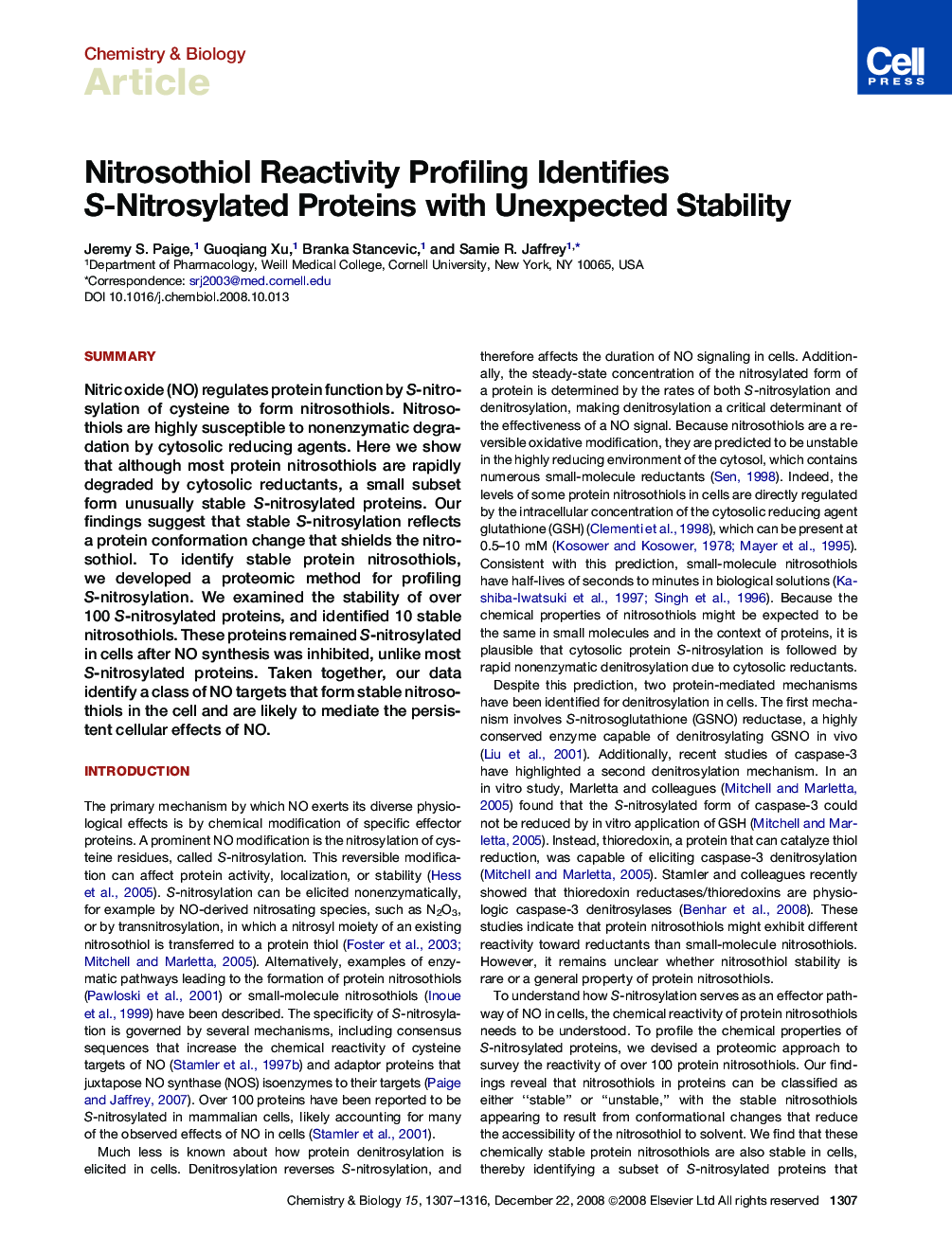| Article ID | Journal | Published Year | Pages | File Type |
|---|---|---|---|---|
| 1392694 | Chemistry & Biology | 2008 | 10 Pages |
SummaryNitric oxide (NO) regulates protein function by S-nitrosylation of cysteine to form nitrosothiols. Nitrosothiols are highly susceptible to nonenzymatic degradation by cytosolic reducing agents. Here we show that although most protein nitrosothiols are rapidly degraded by cytosolic reductants, a small subset form unusually stable S-nitrosylated proteins. Our findings suggest that stable S-nitrosylation reflects a protein conformation change that shields the nitrosothiol. To identify stable protein nitrosothiols, we developed a proteomic method for profiling S-nitrosylation. We examined the stability of over 100 S-nitrosylated proteins, and identified 10 stable nitrosothiols. These proteins remained S-nitrosylated in cells after NO synthesis was inhibited, unlike most S-nitrosylated proteins. Taken together, our data identify a class of NO targets that form stable nitrosothiols in the cell and are likely to mediate the persistent cellular effects of NO.
